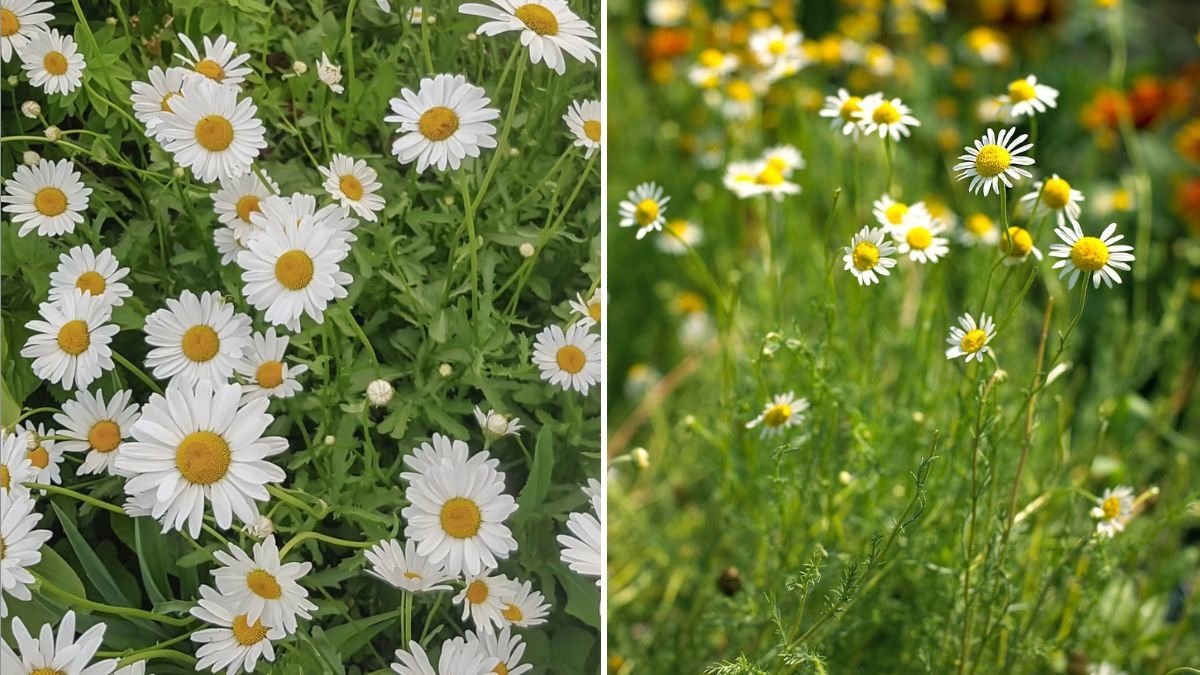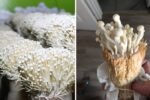When it comes to relaxation, few herbs have captured the American heart quite like chamomile. Known for its gentle floral aroma and calming powers, chamomile has been a staple in herbal medicine and home remedies for centuries. Whether sipped as a bedtime tea, used in soothing skincare, or grown for its daisy-like blooms, chamomile continues to reign as one of America’s favorite natural remedies.
But chamomile isn’t just about tea—it’s an herb with deep roots in both wellness and gardening culture. It offers health benefits backed by science, attracts pollinators to your garden, and adds timeless charm to any landscape. In this comprehensive guide, we’ll explore everything you need to know about chamomile—its origins, health perks, growing tips, and why it’s the ultimate herb for calm, beauty, and wellness.
What Is Chamomile? A Look at This Classic Calming Herb
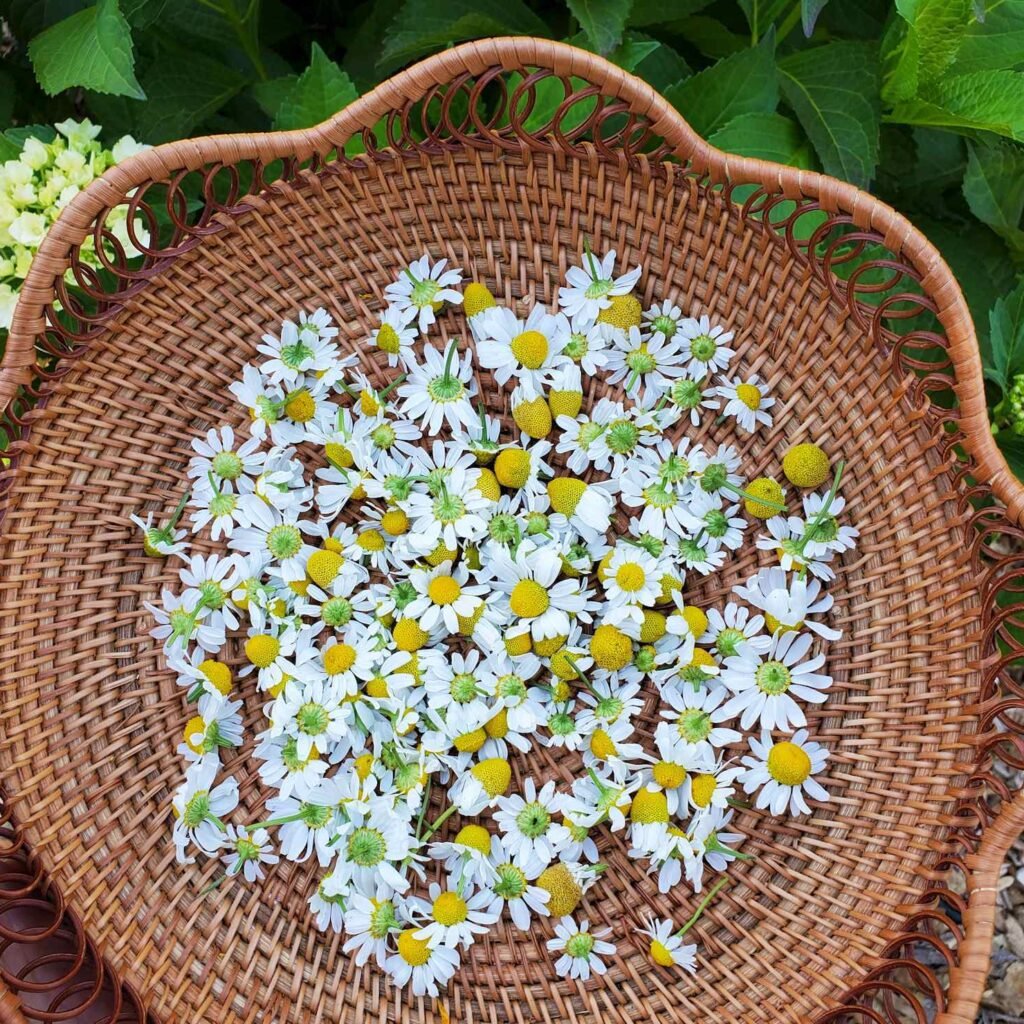
Chamomile (pronounced KAM-uh-meel or KAM-oh-mile) is a flowering herb from the Asteraceae family, which also includes daisies and sunflowers. There are two main varieties commonly used in the U.S.:
- German Chamomile (Matricaria chamomilla) – An annual variety known for its strong flavor and medicinal uses.
- Roman Chamomile (Chamaemelum nobile) – A perennial with a milder taste, often used in lawns, essential oils, and aromatherapy.
Both types share the herb’s signature sweet, apple-like fragrance—in fact, the name “chamomile” comes from the Greek chamaimelon, meaning “earth apple.”
Chamomile has been used for over 2,000 years in European, Egyptian, and Native American traditions for everything from anxiety and insomnia to digestive relief. Today, it’s one of the most widely consumed herbal teas in America—and a must-have for anyone pursuing natural wellness.
Health Benefits of Chamomile: Why Americans Are Turning to This Ancient Herb
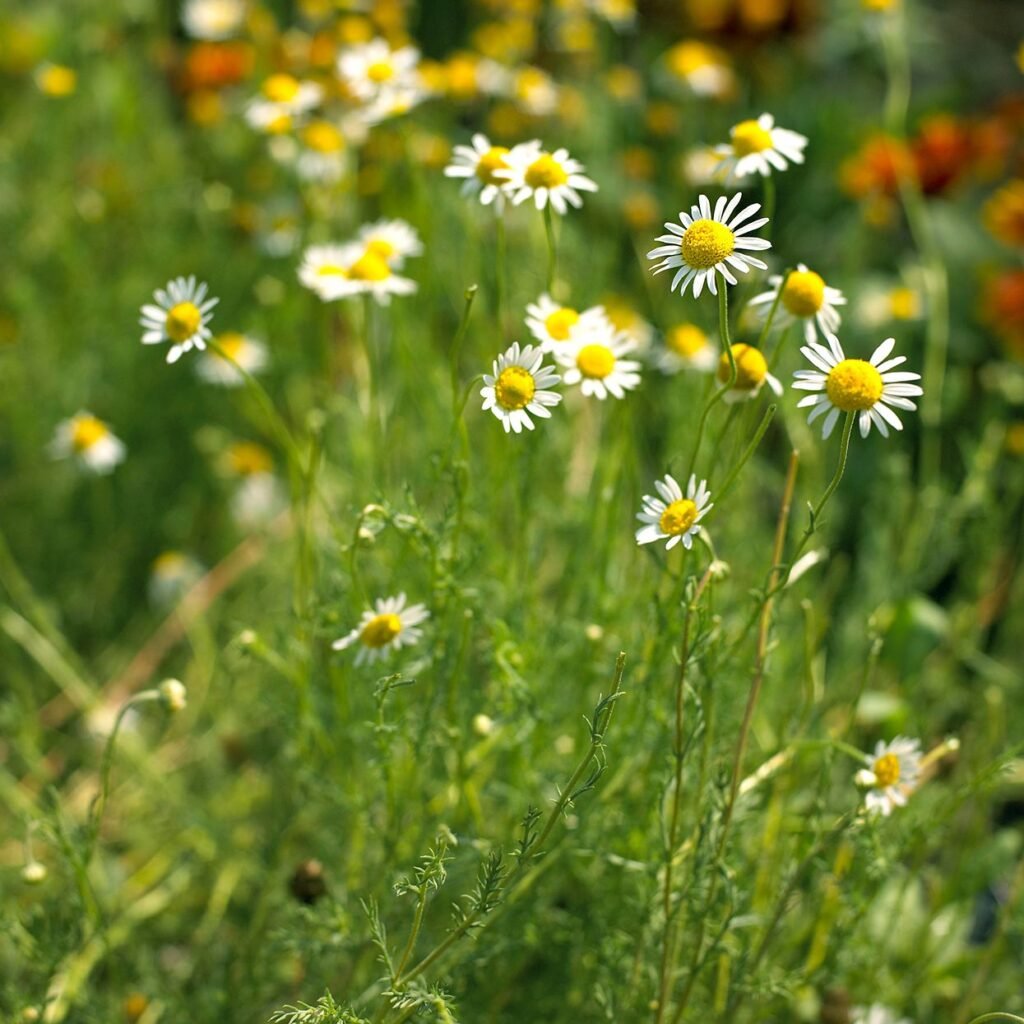
Chamomile isn’t just a pleasant-tasting herbal tea; it’s a powerhouse of healing compounds that can benefit your mind, body, and spirit. Here are some of its most notable science-backed benefits:
1. Promotes Relaxation and Better Sleep
Chamomile’s most famous benefit is its calming effect. It contains apigenin, a natural antioxidant that binds to brain receptors and helps reduce anxiety while promoting restful sleep. That’s why millions of Americans reach for a cup of chamomile tea before bed instead of over-the-counter sleep aids.
2. Soothes Digestive Discomfort
Chamomile tea is a traditional remedy for bloating, indigestion, and nausea. Its natural anti-inflammatory and antispasmodic properties help relax muscles in the digestive tract, making it an ideal after-meal beverage.
3. Reduces Anxiety and Stress
In a world where stress levels are at an all-time high, chamomile offers a natural, non-habit-forming way to calm the nervous system. Studies show that regular chamomile tea consumption may reduce symptoms of mild to moderate anxiety.
4. Supports Skin Health
Chamomile’s soothing nature extends to the skin. Its extracts are used in creams, toners, and masks to calm irritation, reduce redness, and heal minor wounds. Its anti-inflammatory and antimicrobial properties make it great for acne-prone or sensitive skin.
5. Aids Heart and Immune Health
Chamomile is rich in antioxidants, which help protect cells from damage caused by free radicals. Regular use may help support heart health and immune function, making it more than just a bedtime ritual—it’s part of a holistic wellness routine.
Note: Always consult your healthcare provider before using chamomile supplements, especially if you’re pregnant, nursing, or allergic to plants in the daisy family.
How to Grow Chamomile in American Gardens
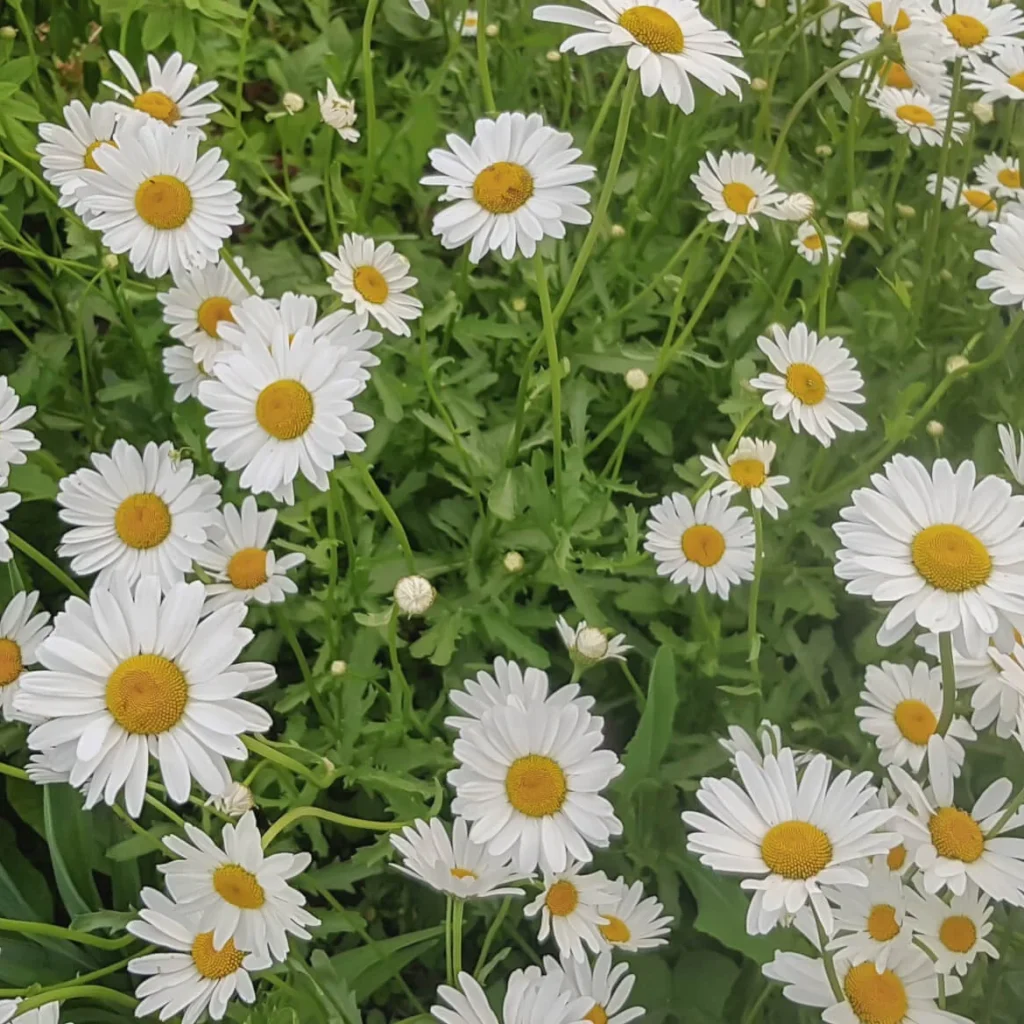
Chamomile isn’t just good for your health—it’s a beautiful and beneficial addition to any garden. Its delicate white and yellow flowers bring charm, attract pollinators, and even help neighboring plants by repelling pests.
1. Best Varieties for the U.S.
- German Chamomile: Ideal for herbal tea and medicinal use; grows easily from seed.
- Roman Chamomile: Best as a ground cover or lawn substitute in cooler climates.
2. Planting Conditions
- USDA Zones: 3–9
- Sunlight: Prefers full sun but tolerates partial shade.
- Soil: Well-draining, average-quality soil (it thrives even in poor soils).
Sow seeds directly in the garden after the last frost, or start them indoors 6–8 weeks earlier. Lightly press seeds into the soil but don’t bury them—they need sunlight to germinate.
3. Watering and Maintenance
Chamomile prefers moderate watering. Once established, it’s drought-tolerant. Avoid overwatering to prevent root rot. Deadhead flowers to encourage continuous blooming.
4. Harvesting Chamomile Flowers
The best time to harvest is when flowers are fully open but still fresh. Snip flower heads and dry them on a screen or paper towel in a cool, dark place. Store dried flowers in airtight jars for tea, crafts, or skincare use.
Pro Tip: Harvest regularly—frequent picking encourages more blooms throughout the season.
Culinary and DIY Uses of Chamomile
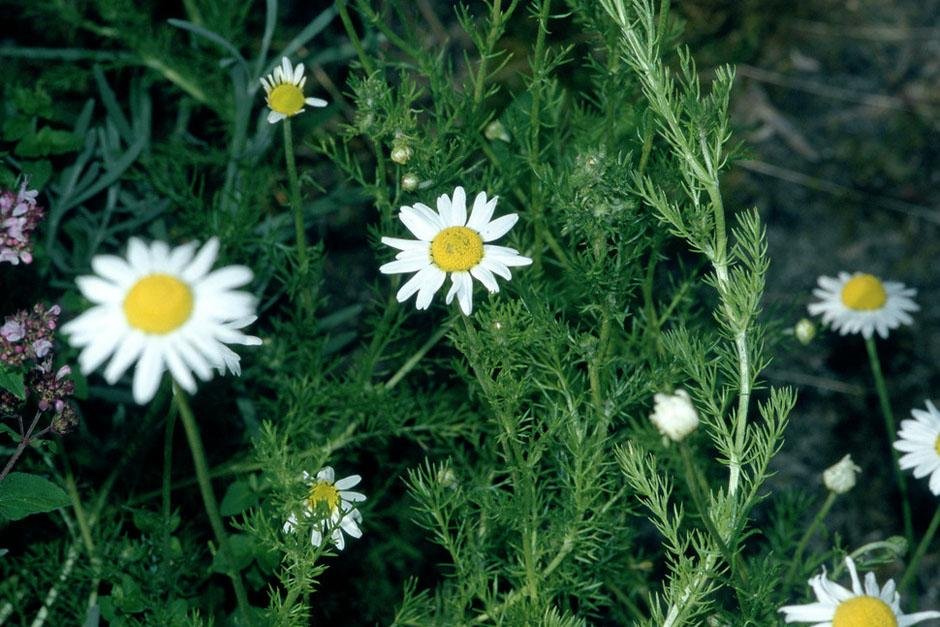
Chamomile’s sweet, floral taste and aroma make it a versatile herb in American kitchens and homes. Beyond tea, it can be infused, baked, or blended into a variety of recipes and remedies.
1. Classic Chamomile Tea
Steep 1 tablespoon of dried chamomile flowers (or a chamomile tea bag) in hot water for 5–10 minutes. Add honey or lemon for extra flavor. Perfect before bedtime or during stressful moments.
2. Chamomile-Infused Honey
Warm honey gently and add dried chamomile flowers. Let it infuse for a few days, then strain. This calming honey can be drizzled over toast, yogurt, or tea.
3. Chamomile Ice Cream or Syrup
Create a light floral syrup by simmering chamomile with water and sugar. Use it to sweeten cocktails, desserts, or homemade ice cream for a soothing summer treat.
4. Chamomile Bath Soak
Add a handful of dried chamomile to your bath or place it in a muslin bag. It’s ideal for soothing irritated skin and promoting relaxation after a long day.
5. DIY Chamomile Face Mist
Steep chamomile tea, cool it, and pour it into a spray bottle. Spritz your face throughout the day for a natural, hydrating refresh.
Chamomile in American Wellness Culture
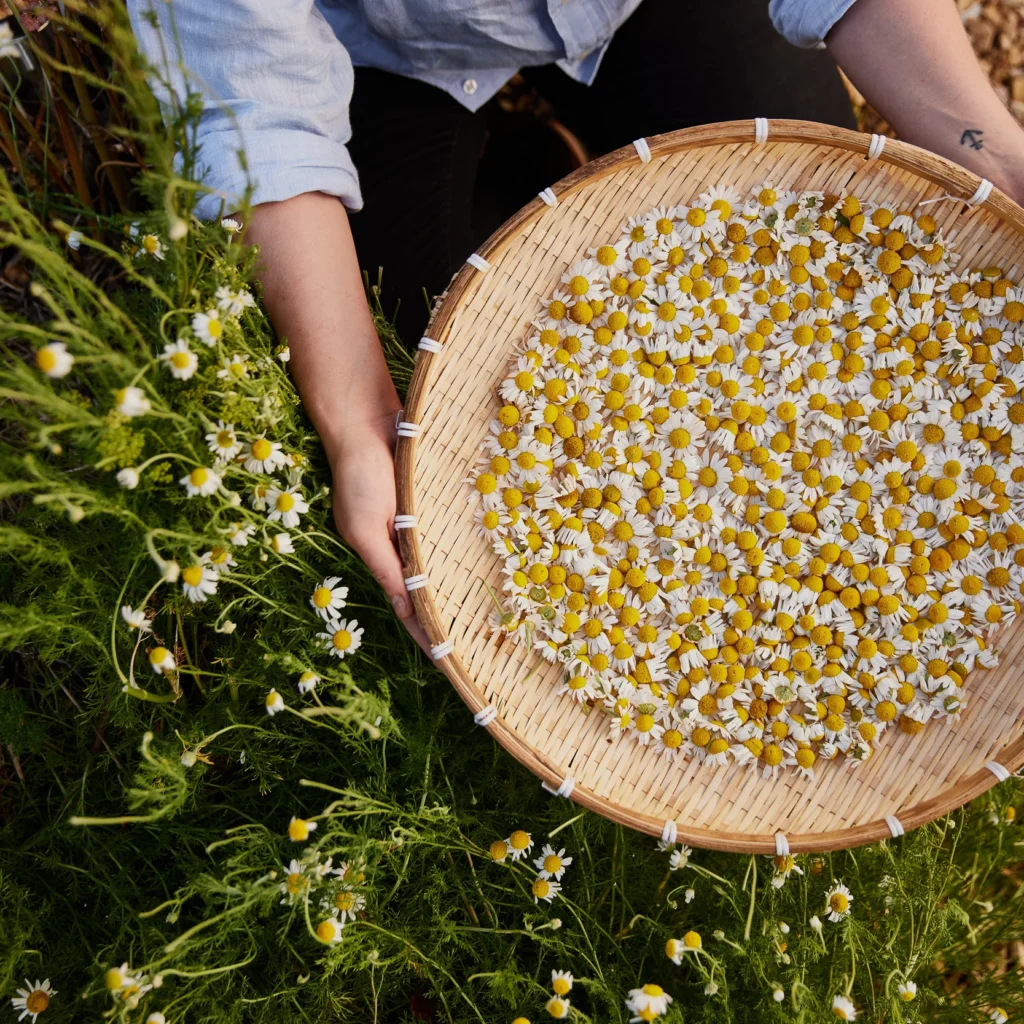
As Americans embrace natural remedies, mindfulness, and slow living, chamomile has become a symbol of calm in the chaos. It’s featured in:
- Sleep and relaxation teas
- Aromatherapy oils
- Organic skincare
- Herbal supplements
- Calming candles and bath products
Health-conscious consumers are rediscovering chamomile not just for its gentle flavor, but for its role in holistic well-being—helping people unplug, unwind, and rebalance naturally.
How to Store and Preserve Chamomile
To make the most of your harvest or store-bought chamomile, proper preservation is key:
- Drying: Spread flowers in a single layer in a warm, ventilated space. Once crisp, store them in airtight containers.
- Freezing: Store chamomile flowers or tea blends in a freezer-safe bag to retain freshness longer.
- Infused Oils: Steep dried chamomile in olive or jojoba oil for 2–3 weeks, then strain and use in skincare products.
Stored properly, dried chamomile retains its fragrance and potency for up to one year.
Fun Facts About Chamomile
- Ancient Egyptians used chamomile to honor the sun god Ra and as a cure for fevers.
- The Romans used it to flavor wine and incense.
- Colonial Americans grew chamomile in their “physic gardens” for medicinal remedies.
- In modern aromatherapy, chamomile essential oil is known as “blue gold” due to its color and value.
- Chamomile tea is the most popular caffeine-free herbal tea in the United States.
Why American Gardeners and Health Enthusiasts Love Chamomile
Chamomile checks all the boxes for today’s natural lifestyle:
- Easy to grow – perfect for beginners or eco-conscious gardeners.
- Multifunctional – from teas to tonics, it’s endlessly useful.
- Bee-friendly – supports pollinators and promotes garden biodiversity.
- Visually stunning – adds old-fashioned charm to herb gardens and wildflower beds.
Whether you’re nurturing a backyard garden in Texas, an urban patio in New York, or a window box in California, chamomile fits right in with the American love of wellness and simplicity.
Conclusion: Sip, Soothe, and Grow with Chamomile
Chamomile is more than just an herb—it’s a lifestyle. With its delicate fragrance, timeless beauty, and proven calming effects, it represents peace, balance, and comfort in our busy modern world.
From soothing teas to radiant gardens, chamomile brings nature’s serenity straight to your home. So this season, plant some chamomile, brew a warm cup, and let this ancient herb remind you to slow down, breathe deeply, and find calm in every moment.
